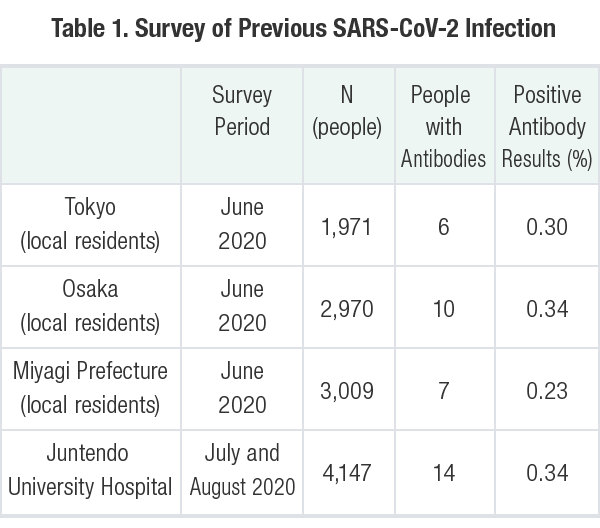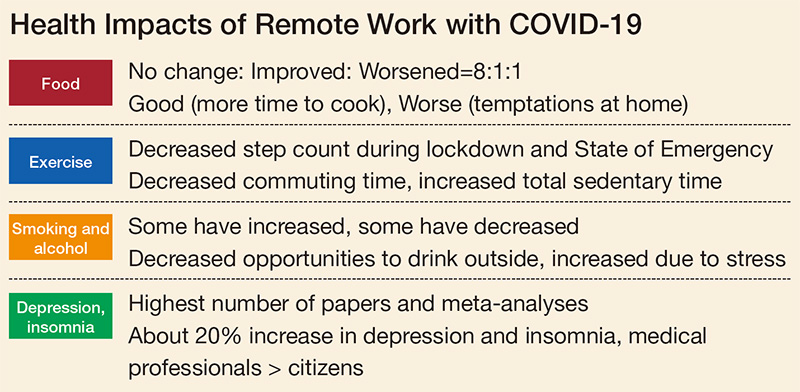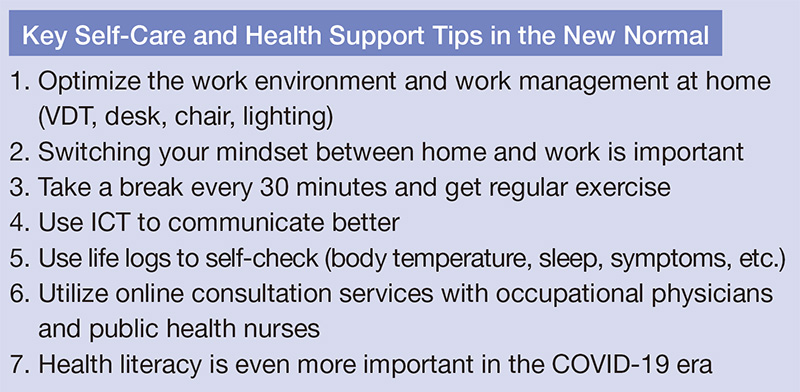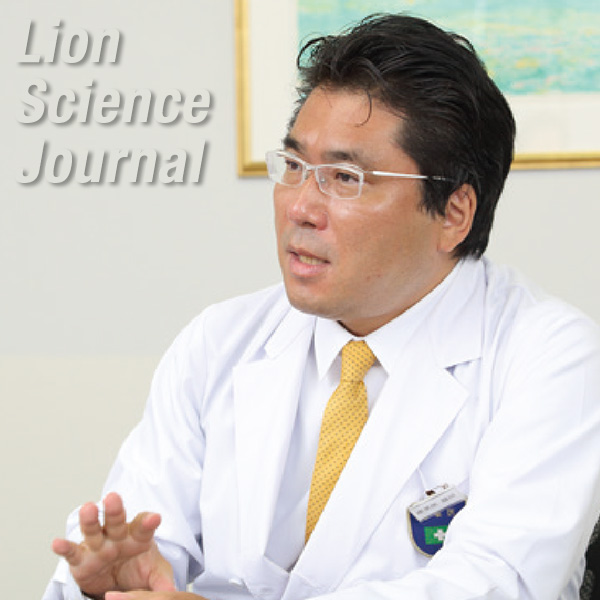The COVID-19 pandemic has had a major impact on the way we live and work. We asked Prof. Hiroshi Fukuda*, an expert in preventive medicine, internist and industrial physician, what we should be careful about in our stay-home lifestyles.
These interviews were conducted in May 2021.
*The professors’ profile can be found at the bottom of this page.
In my first year as a medical doctor, I encountered a diabetic patient who sparked my interest in preventive medicine. Type 2 diabetes patients require dietary and exercise changes to control blood sugar and improve symptoms. I felt frustrated when despite my advising the patient to change his lifestyle, he continued to drink and smoke. And, of course, his blood glucose levels did not go down. Later, however, I was shocked to learn from a Ministry of Health, Labor and Welfare survey*1 that half of the people who are strongly suspected of having diabetes do not seek treatment. Thus, the fact that this particular patient made the effort to come to the hospital was in itself very important. Then, I concluded that I should become an occupational physician to reach the other half, those who do not seek treatment, at their places of work. I thought that, through regular health checkups, potential patients could be identified and encouraged to seek clinical treatment.
During the health checkups of health care workers and staff at Juntendo University Hospital in the summer of 2020, 4,147 people (1,111 doctors, 1,308 nurses, 236 technicians, 314 other health care workers, 510 administrative staff, 632 researchers and 36 others) were tested for SARS coronavirus type 2 (SARS-CoV-2) antibodies to determine the history of SARS-CoV-2 infection. The presence of antibodies indicates that the person has been infected in the past. The results showed that out of the 4,147 people tested, 14 tested positive for antibodies, for a positive antibody rate of 0.34%, virtually the same rate as that in a general population survey conducted by the Ministry of Health, Labor and Welfare in Tokyo, Osaka and Sendai during the same period (Table 1). In addition, there was no significant difference in the positivity rate between healthcare workers at high risk of exposure to SARS-CoV-2 and those working in low-risk environments. Notably, all doctors and nurses on the COVID-19 treatment team and laboratory technicians in charge of PCR testing were antibody negative.

The results of this survey*2 are very encouraging, as they show that even high-risk healthcare workers on the front lines of the COVID-19 pandemic have been able to reduce their infection risk to a level comparable to that of the general public by thoroughly implementing appropriate infection prevention measures. The infection control measures at Juntendo University Hospital are very general, and they do not include any special measures, such as requiring frequent PCR tests to confirm infection. When asked about infection control measures for the COVID-19 pandemic, I conveyed the importance of faithfully implementing the basics.
During the 2020-2021 COVID-19 season, the number of reported influenza cases was much lower than in previous years, and I think this was largely due to the fact that the COVID-19 pandemic encouraged widespread basic infection control measures such as hand washing, gargling, wearing masks, and avoiding crowded places. It is very important to continue to take appropriate infection control measures.
The Sanpo-kai (Society for the Study of Occupational Health), of which I am the president, is a forum for the sharing of opinions and interaction among occupational physicians, public health nurses, human resource workers and students. Via the society’s monthly online meetings, we found that companies were generally very swift in their response to the COVID-19 threat. The first case of COVID-19 in Japan was not confirmed until January 15, 2020, but many businesses had already started to consider how to handle employees overseas earlier in January and, by February, almost all companies with connections to Sanpo-kai members were discussing countermeasures. A survey*3 of corporate responses to the COVID-19 outbreak conducted in May 2020 revealed that almost all of the 122 companies that responded to the survey were experiencing problems due to the pandemic, and one of the problems was the impact of remote work on health.
I have participated in symposia and workshops in Japan and abroad, seeking information on changes in diet, exercise, rest and drinking habits when remote work is prolonged. I learned that the effects on health from remote working are the same around the world. According to a survey*4 of 850 people in the U.K., the health effects of remote work can be characterized into three categories: (1) effects on physical health, (2) effects on mental health, and (3) effects on living habits. Firstly, for the effects on physical health, VDT syndrome*5 such as tired eyes, headaches, and neck and back pain can be observed. Secondly, for the effects on mental health, insomnia, depression and an inability to relax are some common complaints. Thirdly, the effects on living habits include decreased exercise, disordered eating, increased drinking and increased working hours despite being at home.
At the workshop*6 of the Japanese Society for Health Education and Promotion, prominent
professors from
various fields relayed the research trends on the health effects experienced by many people due to fallout
from the COVID-19 pandemic, and the content of their lectures on the health effects of remote work is
summarized in Figure 1.
I, myself, thought that being required to stay inside during a pandemic would have mostly negative health
effects, but studies have shown wide variation among individuals.

One of my patients succeeded in losing weight by using all the additional free time from the COVID-19 pandemic for exercise. Those who were already healthy and neat became more so, whereas people who were indifferent became more disinclined to take care of their health. This is unique in that the difference is clearly visible. During the COVID-19 pandemic, the number of excess deaths*8 including myocardial infarction and cerebral hemorrhage decreased significantly in Japan, and I believe this is another sign that everyone has been taking care of their health in addition to working to prevent infection.
In this new normal era of telecommuting, it is important for workers to be able to manage their occupational health, i.e., the work environment, work and health at home instead of at the workplace. There are seven key points that enable remote work to continue in a healthy manner: (1) optimizing the work environment and work management at home, (2) separating work life from home life, (3) standing up once every 30 minutes, (4) using ICT for close communication, (5) self-checking one’s health with life logs, (6) engaging in online consultations with occupational physicians and health nurses, and (7) improving health literacy (Figure 2).

COVID-19 has brought enormous changes to our lives, but not every change has been negative. Improved digitalization is one example of a positive change resulting from the pandemic. In addition to the dissemination of health information and employee health management, online services will also bring significant change to occupational health practices, such as the ability to conduct online follow-up consultations after health checkups. I also believe that the use of digital technology will make it possible to provide information tailored to gender, age and medical history.
In the midst of an unprecedented event like the COVID-19 pandemic, there is a lot of information—and misinformation—being circulated. Knowing how to access reliable sources of information on self-testing kits, vaccines, etc., is also part of health literacy. I believe that the overall result of each individual making the right decisions and taking the right actions based on correct information will lead to a reduction in the number of infected people and the end of the pandemic.
I believe that COVID-19 will continue circulating for some time to come, so we need to continue with basic infection prevention measures. I would like each of us to improve our health literacy so that we and our loved ones can live with peace of mind.
*1Ministry of Health, Labour and Welfare, 2002 Diabetes Survey Report (50.6% of “those strongly suspected of having diabetes” answered that they were currently receiving treatment)
*2Fukuda H et al. (2021) SARS-CoV-2 seroprevalence in healthcare workers at a frontline hospital in Tokyo. Scientific Reports, 11, 16042
*3Fukuda H (2021) Corporate response to COVID-19:
from the survey and discussion at Sanpo-kai.
Occupational Health Journal, 44(1): 31-35
*4Working from Home: What is the impact on Wellbeing? Stephen Bevan, Head of HR Research Development at UK-based IES, Global Centre for Healthy Workplaces webinar (Apr. 2020)
*5Visual Display Terminal (VDT): Refers to the output devices of a computer, consisting of a display, keyboard, etc. The symptoms caused by working with these devices for a prolonged period are called VDT syndrome.
*6A report of the workshop on health education and
promotion under the COVID-19 pandemic, organized by the Japanese Society of Health Education and
Promotion, held on Jan. 24, 2021
Japanese Journal of Health Education and Promotion (2021) vol. 29, no. 2: 198-206
*7 Health literacy: The ability to access, understand, and use health information.
*8The incremental number of deaths compared to the projected number of deaths. Calculated at the time of an infectious disease pandemic, it is one of the indicators of the magnitude of the impact of that infectious disease on society.
Hiroshi Fukuda,M.D., Ph.D.
Project Professor, Department of Advanced Preventive Medicine and Health Literacy, Juntendo University Graduate School of Medicine

Prof. Fukuda graduated from Faculty of Medicine, Yamagata University in 1993 and received his M.D. from the Graduate School of Medicine, Juntendo University in 1999. In 2011, he completed the Graduate Summer Session in Epidemiology at the University of Michigan School of Public Health. He has been in his current position since 2020 after working as a director of the health examination department of the Tokyo Yaesu Health Evaluation and Promotion Center and an associate professor of the Department of General Medicine at Juntendo University Graduate School of Medicine. His specialties include preventive medicine, occupational health, and health literacy. In addition to being in charge of outpatients at Juntendo Clinic General Medical Department, he works as an occupational physician certified by the Japan Medical Association and aims to establish preventive medical care for the working generation. He is the president of Sanpo-kai (Society for the Study of Occupational Health) where multidisciplinary occupational health staff such as corporate personnel and industrial physicians and public health nurses exchange ideas and information.